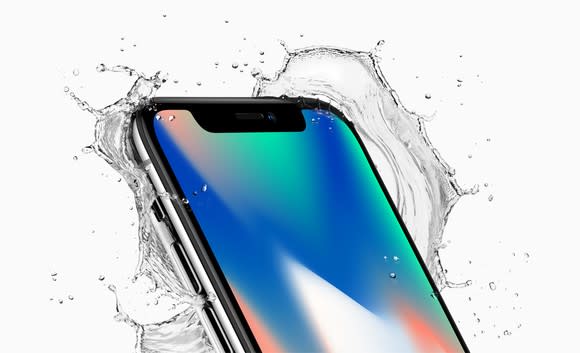3 Rock-Solid Cheap Stocks with P/Es Under 15
With the S&P 500 hovering near historic highs in an aging bull market, investors should avoid chasing high-flying stocks with stretched valuations. However, there are still bargains in this market that trade at surprising discounts to the S&P 500's current P/E of 22.
Let's examine three rock-solid stocks that trade at less than 15 times earnings -- HP (NYSE: HPQ), IBM (NYSE: IBM), and Corning (NYSE: GLW).

Image source: Getty Images.
The world's top PC maker
HP, the biggest PC maker in the world, trades at less than 15 times earnings, compared to the industry average P/E of 22. Its forward P/E of 12 looks even cheaper. Those ratios are low considering that HP already rallied 45% over the past 12 months.
The market still undervalues HP because its core PC and printer businesses seem like slow-growth ones. Yet both businesses are growing, with its PC and printing revenues respectively rising 13% and 7% annually last quarter.
PC sales jumped on better premium laptop designs, new gaming PCs, more secure systems for enterprise customers, and its strength in the North American market. Its printing revenues rose on strong consumer sales, which offset softer demand from enterprise customers. HP is scaling up the printing business with its acquisition of Samsung's printing business, as well as moves into new markets like mobile and industrial 3D printers.
Higher component prices remain a headwind for its PC business' margins, but those costs should decline over the next two years. Analysts expect HP's revenue and earnings to respectively rise 4% and 10% this year. The stock also pays a decent 2.6% forward yield, which is supported by a low payout ratio of 36%.
An evolving tech giant
Tech stalwart IBM trades at less than 14 times earnings, compared to the industry average of 21 for IT services providers. It has an even lower forward P/E of 12.
Many investors, including Warren Buffett, dumped IBM over the past 12 months, causing the stock to stumble 4% against the S&P 500's 20% gain. The reason was simple: Big Blue's revenue had fallen annually for 22 straight quarters.
However, IBM plans to break that losing streak with the growth of its "strategic imperatives" (SI) businesses, which include its mobile, social, cloud, security, and analytics efforts. It believes the growth of those businesses will eventually offset the softness of its legacy business hardware, software, and IT businesses.
IBM's SI revenues rose 10% annually over the past 12 months, accounting for 45% of its total revenues. This indicates that IBM's investments in new technologies -- like its Bluemix cloud platform, AI platform Watson, blockchain, and quantum computing -- are gradually paying off.
Analysts expect IBM's revenue to fall 2% this year, but for its earnings -- lifted by cost cuts, divestments, and buybacks -- to rise almost 2%. That bottom line growth will protect its forward yield of 3.9%, which is supported by a payout ratio of 48%.
The maker of Gorilla Glass
Corning produces a wide range of glass, ceramics, and optical networking products. But it's best known as the producer of Gorilla Glass, the lightweight and damage-resistant glass used across a wide range of consumer electronics and mobile devices.

The iPhone X is protected by Corning's Gorilla Glass. Image source: Apple.
Corning's Specialty Material business, which produces Gorilla Glass, posted 26% annual revenue growth last quarter and accounted for 14% of its top line. Corning's Optical Communications business, which generated about a third of its revenues last quarter, is also posting solid double-digit sales growth on robust demand for optical components from service providers.
Its Life Sciences business revenues are rising on demand for its Valor Glass pharmaceutical glass packaging, while its Environmental Technologies unit is seeing strong sales of ceramic substrates and filter products for emissions control in vehicles. Corning's only soft spot is its Display Technologies business, which is weighed down by sliding LCD prices.
Analysts expect Corning's revenue and earnings to respectively rise 7% and 10% this year. Those are solid growth rates for a stock that trades at less than 15 times earnings, which is lower than the industry average of 18 for electronic components makers. Corning also pays a forward yield of 1.9%, which is comfortably supported by a payout ratio of 26%.
More From The Motley Fool
Leo Sun owns shares of Corning and HP. The Motley Fool recommends Corning. The Motley Fool has a disclosure policy.

 Yahoo Finance
Yahoo Finance 